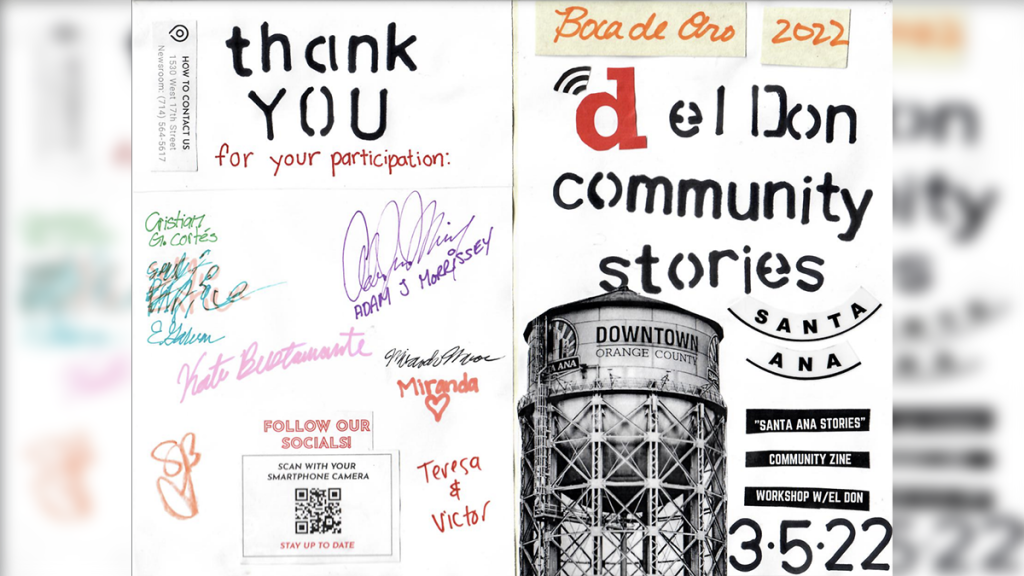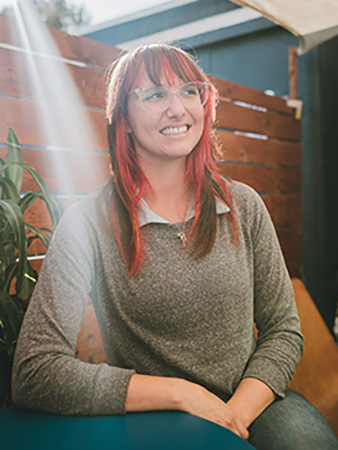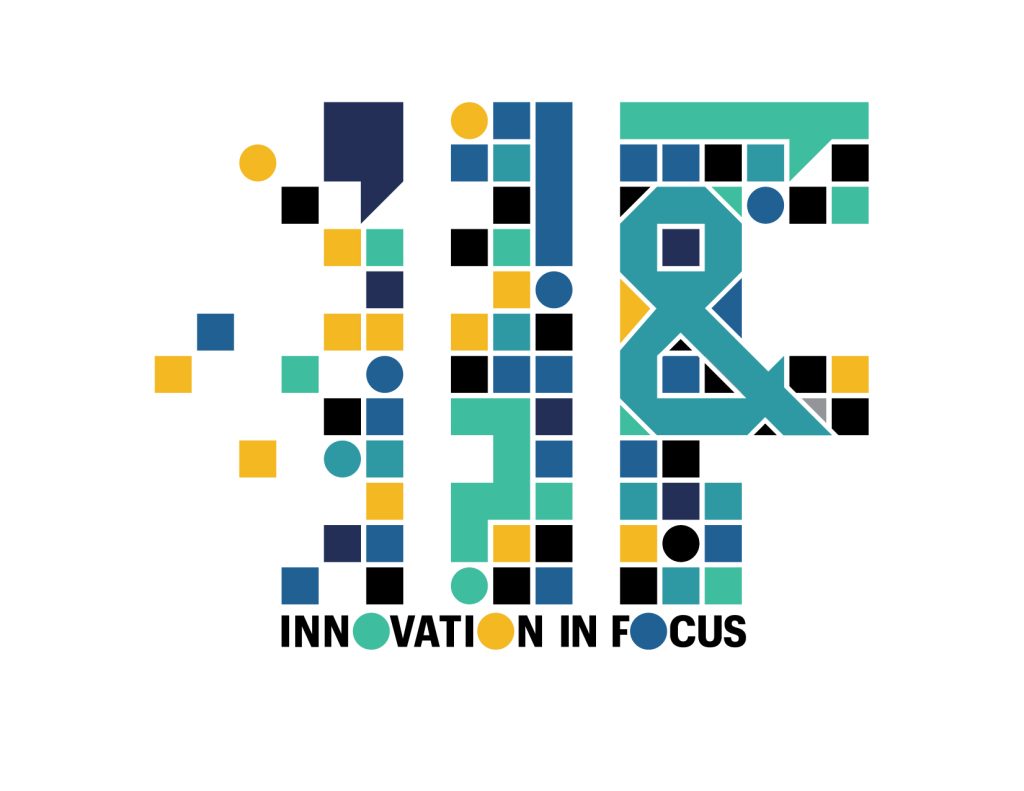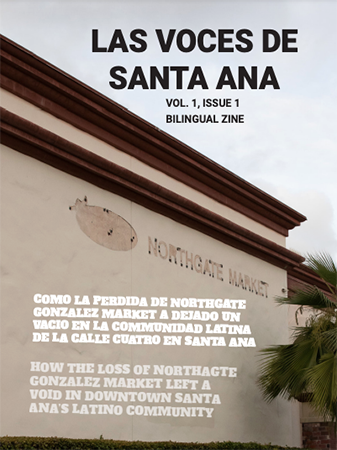
An example of a community zine that Sarah Bennett worked on with student journalists at Santa Ana College.
Using zines to connect with a hyper-specific audience
Print is not dead: A conversation with Sarah Bennett
Working with artists and journalists at all skill levels in her print shop, Sarah Bennett is familiar with tailoring zines to meet the needs of different producers and audiences.
The Innovation in Focus team met with Bennett to talk about some of the common challenges she sees in the production process, the unique benefits of using zines to distribute information and the best places to look for inspiration. Here are some key insights and advice for newsrooms that are looking to get started with zines.

Sarah Bennett co-owns and operates a community print shop in Southern California and founded the Long Beach Zinefest in 2015. She is also the chair of the journalism program at Santa Ana Community College in Santa Ana, CA.
Anderson: What are some common challenges that you see first time zine-makers encounter?
Bennett: Most people don’t know how to format. Everybody has a different knowledge level of getting into this. Between “here’s my art and I don’t even have it digitized yet” to someone having it ready to go, we get every level in between.
I received a file on Monday sent to me as spreads, which is what it’s supposed to look like in the final zine but isn’t optimal for printing. If I printed it, it would be backwards, because that’s not the booklet layout. I either had to figure out a way to cut the PDFs in half or I could just email the client back to send me a single-page PDF because I have a program that takes the single-page PDF and turns it into the booklet version that we need to print. I would say that that’s probably the biggest roadblock, people will have ideas about a zine but they don’t know how to execute the format for printing.
Anderson: What do you think the difference is for designing a zine that’s primarily art versus one that might be for distributing news?
Bennett: The ones that are distributing information, I treat those more like a mini-magazine or a mini-newspaper. You can either create a template or create a one-off design, but essentially you just have to get used to the really small size.
It’s almost like truncating. You have to condense it a lot because you can only fit about — if you’re cramming it to the gills — maybe 500 words per page for one of these half-page ones. It’s not that much text. The way to make it most effective is that it’s a single topic on one issue. And in that case, it becomes like a TikTok in your hand. It’s a single subject, and you can read through it in probably under two minutes.
So first is, how do you present this information in a way that is digestible? Then you’re designing for fundamentals and visual hierarchy. How do you want that information to be perceived? You can have so much more fun and flexibility with zines. You can make each page an infographic if you wanted, or you can make each page look more like a vertical image from a TikTok.
The best part of zines is there are no rules. When you’re doing a small batch, you’re not committing to thousands and thousands of copies, so if you mess up, it’s okay; you can print only a couple hundred copies and then change it on the next one.
First of all, do they need a zine? If yes, that tells me that you determined that the audience might not have access to digital resources. Or, this information is so important that you want to connect it with the community by making sure people are picking it up in person … to emphasize that this is something more serious that shouldn’t just be passed by in a scroll feed. This is something that you should keep around. This is information you need to hold on to.
Anderson: What are some good places to look for inspiration for people who are starting out?
Bennett: Go to a zine fest, a lot of us live within traveling distance of a zine fest now.
The best part about a zine fest is that you can meet the creator and talk to them, and everybody at a zine fest is super nice. It’s an inclusive community because it is a format that was historically used by marginalized people and continues to be a format for those that are marginalized as a way to express themselves in this smaller format without having to go to an authority figure to get approval.
There are tons of online resources, and usually people’s first instinct is to Google ‘How do I make a zine?’ But keep in mind that you’re going to be getting digital versions of a physical product. You’re reading something digitally that really is meant to be experienced in a physical, tactile, in-person environment.
Anderson: How do you pick a strategy for distributing — apart from a zine fest or community event, if you need to get the zines out over a broader area?
Bennett: That goes back to audience centricity and audience engagement strategies that are probably already built into the news organization. It’s just a different medium, but the strategy would be the same: “Who’s the ideal audience for this?”
And that conversation should start before you start designing. Are you going to make this a big zine? How many pages do you need? (They have to be in multiples of four. That’s another big mistake.) And who is the audience? What do they need?
First of all, do they need a zine? If yes, that tells me that you determined that the audience might not have access to digital resources. Or, this information is so important that you want to connect it with the community by making sure people are picking it up in person … to emphasize that this is something more serious that shouldn’t just be passed by in a scroll feed. This is something that you should keep around. This is information you need to hold on to.
Then: Where is your audience? And you can start a distribution strategy from there. Each of these [example zines that I pulled] would have a different distribution strategy because they’re all different. In this one, they closed this Northgate market, and they’re going to be building luxury lofts on the footprint. One of our students lives in the apartment complex across the street and interviewed all her neighbors. She shot these beautiful portraits and then did Q&As about the loss of this market. So what did we do? We printed these out, and she left them all over her apartment complex. We printed about 300 copies, and she hand-distributed them to the neighbors. Every neighbor that was featured in this got like 50 copies to distribute to their friends and family. And it’s bilingual too. It’s English and Spanish. So that’s another consideration, right?
Knowing your audience allows you to make a product that will get read because it’s not enough to just distribute it to them, you have to make sure that it’s also speaking to them. And then I tell the students to keep them in your pocket all the time. So when you have conversations with people, you can hand-distribute them.
Anderson: Are there any final tips you’d like to share?
Bennett: I just always think of this as a part of a multi-platform strategy. Zines aren’t going to replace all the other work that journalists do and all the other platforms that we operate on. It’s another tool in your tool belt, and it is a way that proves that print is still viable, and that audiences still do want tactile information. Print is not dead, and zines are proof of that. And the fact that news outlets are finally waking up to this and realizing that there’s still a way to create a print product, I think it will ensure that more important information gets out to more people.
I’m really excited to see what other news outlets do with it.
Editor’s Note: This interview has been edited for clarity and brevity.

Sign up for the Innovation in Focus Newsletter to get our articles, tips, guides and more in your inbox each month!
Cite this article
Anderson, Sophia (2024, Oct. 16). Using zines to connect with a hyper-specific audience. Reynolds Journalism Institute. Retrieved from: https://rjionline.org/news/using-zines-to-connect-with-a-hyper-specific-audience/

